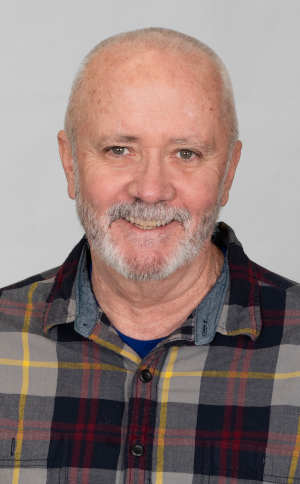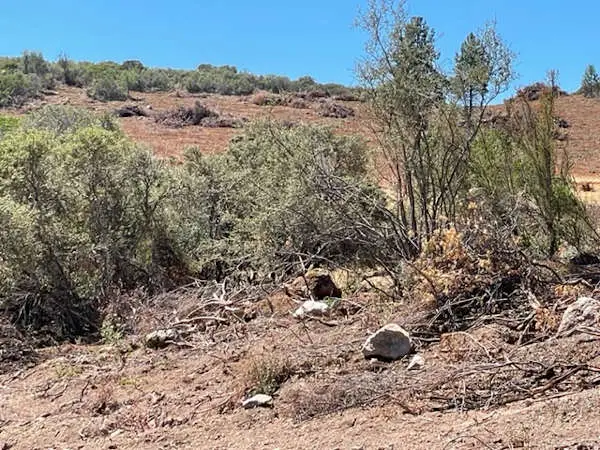- Dr. David S. McQueen
- Posted On
Putting Students First: The glue that keeps schools together — classified employees

KELSEYVILLE, Calif. — In October, Paulene Raffaelli, our bus driver on route No. 1, was headed back to the bus barn after dropping off her last student when she came across a brush fire next to the road.
Nobody was around and the fire was freely burning not far from the base of Mount Konocti.
Paulene immediately sprang into action. She stopped her bus and grabbed the fire extinguisher that each bus is required to carry. She was able to get the fire out with the extinguisher, and then another motorist stopped and used water they had on hand to douse the area.
Honestly, they may have just stopped the next big fire here in Lake County.
Paulene is a great example of the awesome people working at Kelseyville Unified and throughout Lake County schools. She represents one of the many employees who make up our “classified” staff — those who support students without using a teaching credential.
Our teachers get a lot of well-deserved credit for their amazing contributions, and I’ll keep throwing plenty of kudos their way.
But today, I’d like to talk about the employees behind the scenes who keep our schools running day in, day out, year in, year out, while the teachers work their magic in the classrooms.
Bus drivers and transportation
Many students start and end their school day with our bus drivers, who safely transport kids to school, rain or shine. Our drivers help set the tone for the day and without them, some kids wouldn’t get to school on time (or at all).
We also have other great employees in the Transportation Department. Our transportation secretary, Jessica Lorenzen, does an amazing job of keeping track of the bus passes and making sure everyone is transported to and from their correct locations. She helps keep the whole department rolling (no pun intended).
And our district mechanic, Gerald Sarver, keeps our buses and all district vehicles safe and maintained according to California Highway Patrol regulations. When called upon, he can also jump behind the wheel to drive a bus.
Skilled maintenance and groundskeepers
Those buses drop students off at well-maintained campuses thanks to our maintenance and grounds crew.
It’s hard to describe the variety and complexity of projects required to keep district facilities in good working order. Not only do our crew members take care of existing buildings and grounds through repairs and maintenance, they also perform alterations and new construction in accordance with local, state, and federal standards.
Thanks to the Maintenance Department, we can provide safe, efficient, and clean learning environments for students and staff.
Not only that — our crew makes sure indoor and outdoor athletic facilities and fields are in great shape, so the whole community can enjoy them.
We are lucky to have a skilled and hard-working team that takes such pride in their work.
Custodians
And who keeps those campuses and district facilities clean? That would be our custodians. Not to be gross, but have you ever thought about all the ways that hundreds of students could make a campus dirty?
Well, our day and night custodians can tell you. Yet, each morning when students and staff arrive, they are greeted with clean classrooms, gyms, cafeterias, restrooms, and offices.
Thanks to our custodians, we start each day with empty garbage cans, litter-free outdoor areas, and great-smelling disinfected surfaces, making all of our school sites and departments great places to work, teach, and learn.
Secretaries and clerks
Once the day is in full swing, it’s often up to our school secretaries to keep things running smoothly. I think they’d agree that “other duties as assigned” might be their main responsibility.
They complete all sorts of clerical tasks, but that’s just the start of it. They reassure sick kids while they’re waiting to be picked up, they smooth ruffled feathers when people arrive in a bad mood, they call parents when students forget their lunch or PE clothes, and they help their principal hold down the fort.
If you went to school at Kelseyville Elementary in the last couple of decades, you know Pat McGrath. She’s a fixture. Having a familiar face in the office year after year provides a stable, reliable environment and that’s good for everyone.
Aides (instructional, special needs, noon duty, language and more!)
Our aides work with students one-on-one and in small groups. Like secretaries, they also spend a lot of time on other duties as assigned, from providing extra support on difficult instructional concepts to helping students through the process of losing their first baby tooth.
Our special needs aides work with students with disabilities to support them and help them gain skills in all sorts of areas.
Campus monitors
When it comes to keeping kids safe and on track, our campus monitors are essential. They keep an eye out to prevent problems and address little issues so they don’t become big issues.
They report problems right away. Having an extra set of eyes on students is so helpful. Our administrators really appreciate the work they do.
Food service workers
When it comes to our most important need–basic health–our food service workers take care of business. They make sure students have healthy meals so they can concentrate on learning.
Our schools provide breakfast and lunch and our food service workers nourish students with more than just food–they nourish kids with kindness, putting smiles on student faces every day.
Nurses
Nurses also keep kids healthy. During the pandemic, our nurses went way beyond the call of duty. Now that things have mellowed a little, they’re able to focus on health and wellness overall.
This can mean everything from taking a student’s temperature to assessing whether a student should be referred to a physician for more follow-up.
Technology analysts
While the IT Department isn’t a health-related department, they do improve our mental health every day.
Have you ever had a computer problem at a crucial moment? Imagine having 30 little faces looking up at a screen that suddenly goes blank (if you’re over 50 years old, think of a chalkboard where everything is suddenly erased).
At Kelseyville Unified, our two-person technology team fields calls all day every day to keep everyone productive (and less stressed).
In October, the IT Department received 330 help tickets, with an average response time of five hours and an average ticket close time of two days. Of those 330 tickets, 165 were completed by our incredible network analyst, Josh Crook.
Library clerk
Information doesn’t just come in the form of technology — sometimes it comes in books! Our library clerks introduce students to all the wonderful resources available in our libraries, opening up whole new worlds of information.
Registration staff
And before students can appreciate any of the wonderful services above, they have to get registered to attend school in our district.
For the 2022-23 school year, our Welcome Center staff handled more than 330 new student enrollments, presenting each new Kelseyville Unified family with a friendly introduction to our district.
Without classified workers, schools would come unglued. I wish I could mention everyone by name. They all deserve to be recognized. They keep our district running and provide tremendous support to students and faculty.
If you get the chance, be sure to thank these unsung heroes. And if any of these jobs sound like a good fit for you, you can view local job openings at EdJoin.org.
Dr. David S. McQueen is superintendent of Kelseyville Unified School District.














 How to resolve AdBlock issue?
How to resolve AdBlock issue? 




